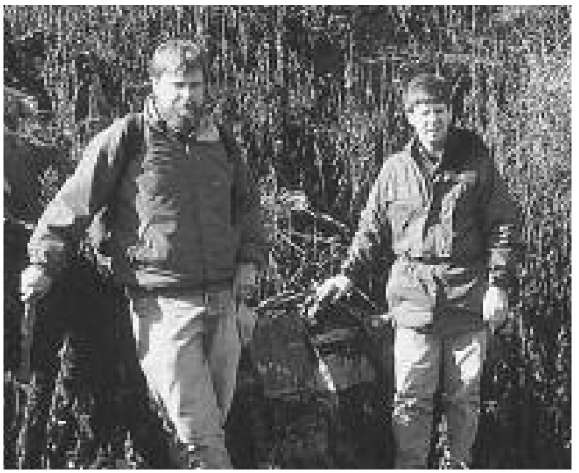(1953- ) American Isotope Geochemist
The Cambrian-Precambrian boundary is the most profound transition in the geologic record in terms of life. This boundary marks the demise of a rich diversity of invertebrate fauna that lack shells, including some jellyfish and worms, but also some complex forms. They were replaced by a whole new group of shelled invertebrate fauna in the Cambrian, many of which are the ancestors of our modern marine invertebrates. Classically, this boundary was considered to have occurred approximately 600 million years ago but was later revised to 570 million years ago. Recently, however, Sam Bowring, working in conjunction with sedimentologist John Grotzinger and paleontologist ED LANDING, among others, has revised that age to 534 million years using new high-precision geochronology. This work is a major contribution to the science. He further determined the ages for the appearance and changes of certain animals in the Cambrian age, thus determining rates of evolution during this period of rapid diversification. This detailed geochronology of individual volcanic layers coupled with detailed stratigraphy and paleontology on a layer-by-layer basis as shown in his paper “A New Look at Evolutionary Rates in Deep Time: Uniting Paleontology and High Precision Geochronology,” sets a new precedent in evolutionary analysis. It has already led to new insights and will likely lead to more in the future. During this project he performed research on rocks from the Avalon Ter-rane in Nova Scotia, Canada, as well as those in Namibia and Madagascar, Africa, and the White Sea in Russia.
Sam Bowring (left) on a field trip with a student
The other major area of research for Sam Bowring is the development of the continental crust. Ocean crust is created at the mid-ocean ridges and destroyed at the subduction zones within about 200 million years. Continental crust, on the other hand, has been built throughout the history of the Earth. Because there are numerous and complex processes in the assembly of a continent, all of which overprint and modify each other in complex ways, deciphering the geology of continents becomes a monumental task. Bowring collaborates with tectonic and regional geologists to provide the geochronologic (age) constraints on some of these events. He has done research on 3.96-billion-year-old gneiss in the Slave Province of the Northwest Territories of Canada, which are among the the oldest rocks on Earth and therefore among the earliest continental crust. He defined 2- to 2.4-billion-year-old crust in the western United States in Arizona and New Mexico. He also performed research on Precam-brian rocks from the Natal Province of South Africa, as well as those from Namibia, Botswana, and Zimbabwe, Africa. It is clear that Bowring will travel to the ends of the Earth to find the best location to research the particular process that he is studying at the time. This care in the details of his isotopic analysis, his effort in forming solid collaborations with geologists with complimentary expertise, and his care in choosing only the best examples on which to perform research has propelled Bowring to a position of one of the premier scientists on Precambrian research.
Samuel Bowring was born on September 27, 1953, in Portsmouth, New Hampshire, where he spent his youth. He enrolled at the University of New Hampshire in Durham and earned a bachelor of science in geology, cum laude, in 1976. He completed a master of science degree at New Mexico Institute of Mining and Technology in geology in 1980. He earned a Ph.D. in geology from the University of Kansas at Lawrence in 1985. Bowring joined the faculty at Washington University in Saint Louis, Missouri, in 1984. He moved to Massachusetts Institute of Technology in Cambridge in 1991, and he remains there as professor of geology today.
Sam Bowring is leading a very productive career. He is an author of 82 articles in international journals and professional volumes. He also has several other publications in field trip guides and governmental reports. Many of these papers are seminal works on the early history of the continental crust or the defining works on the Precam-brian-Cambrian boundary. Many are published in high-profile journals like Science. Bowring has received several honors and awards for his contributions to the science. He is a member of the American Association for the Advancement of Science. He was named the Louis Murray Fellow at the University of Cape Town, South Africa, in 1995. As a graduate student, he received the Dean A. McGee and McCollum Burton Scholarships and the Erasmus Haworth Honors in geology. He has also been invited to present several important keynote addresses worldwide.
Bowring has been involved in significant service to the profession. He served as associate editor for Geology Magazine, and Journal of Geophysical Research. He was also on the editorial board for Precambrian Research.

